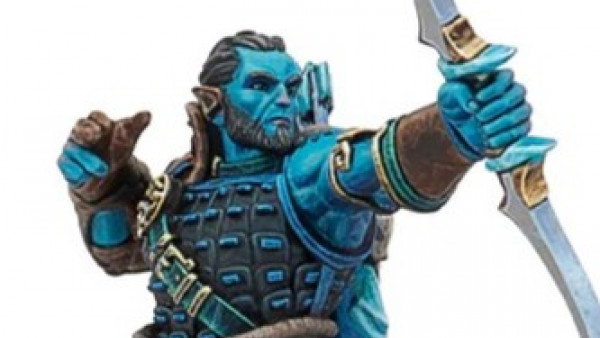Home › Forums › News, Rumours & General Discussion › RIP Stan Lee.
This topic contains 12 replies, has 13 voices, and was last updated by ![]() doomzombie 6 years, 2 months ago.
doomzombie 6 years, 2 months ago.
-
AuthorPosts
-
November 12, 2018 at 8:15 pm #1300694November 12, 2018 at 8:17 pm #1300697
Was just about to post this, but you’ve beaten me to it.
On the plus side, at least with current tech he can go on cameoing in Marvel films.
November 12, 2018 at 8:32 pm #130071295 is a cracking age and he has had a real impact on all us, all the very best Stan for my youth. Rest in Peace
November 12, 2018 at 8:44 pm #1300730Douglas Rain (voice of HAL 9000) passed away too.
And the rest of the depressing list :
November 12, 2018 at 8:58 pm #1300733Rest in peace Stan, Excelsior
November 12, 2018 at 9:00 pm #1300734November 12, 2018 at 9:15 pm #1300735November 12, 2018 at 9:21 pm #1300740November 12, 2018 at 10:40 pm #1300780Nuff said!
And no more ‘No Prizes’!
November 12, 2018 at 10:56 pm #1300793We should all be so lucky to live to 95, the man is a legend and has created something that will live on for a very long time to come.
Beyond family, there are not many 95-year-olds that my children will be sad to hear about passing which shows how far and wide his impact is.
RIP Stan Lee thank you for the Marvel Universe.
November 12, 2018 at 11:23 pm #1300809I’d love to have the time to write a proper retrospective on Stan Lee’s career, but here is a much briefer and hastily-written one for those who may only know him as the Marvel Comics guy who does the movie cameos.
The huge success of Superman in 1938 saw many pulp magazine publishers open up comic book wings to cash in the superhero boom. Among them was Martin Goodman’s Timely Comics, which opened in 1939 and hired Goodman’s wife’s cousin, Stanley Lieber, as an office assistant. By 1941, Lieber was beginning to write stories for Timely under the pen name Stan Lee. Comic book publishing was still very much a low brow industry compared to books and newspaper strips, and Lieber didn’t want his given name to become associated with them.
Later that year, Joe Simon, Timely’s editor, and Jack Kirby, an artist with whom Simon had created the smash hit Captain America comic that year and with whom Lee’s career would become inextricably intertwined, left Timely, and Lee, still only 19, quickly found himself promoted to editor. He was drafted a year later and assigned to the Signal Corps. He never saw any combat, never left the US, and was even allowed to continue writing comics. In 1945 he returned to Timely as editor and saw out a very successful decade running the comics division from within an office in the Empire State Building.
In 1950, Timely was rebranded by Goodman to Atlas Comics, and followed a short-termist publishing strategy of flooding the market with 60-80 titles each month that followed the trend of whatever was selling at the time. Disaster struck in 1957 when American News Company, the largest distributor in the US, was liquidated and left Atlas without distribution. Goodman was forced to sign a deal with rival National Periodical (now DC Comics) which agreed to distribute just 8 titles a month. This led to a dramatic downsizing of Atlas with Lee left running a skeleton company. Rumour has it that Goodman discovered a room full of rejected comic book pages that Lee had still paid for as he didn’t like to leave an artist unpaid even if they work wasn’t good enough, and forced Lee to publish them to cut costs. In addition to the layoffs, Lee’s main artist and friend, Joe Maneely, died in 1958 when he fell from a train.
Superheroes had dramatically declined in popularity following the end of World War II and in its place, EC Comics and their range of horror, crime, war, and sci-fi stories became the new industry leader. (You’ve likely at least heard of Tales from the Crypt). Senate hearings into juvenile delinquency in 1954 included two on the corrupting influence of comic books and led to the creation of the self-regulatory body, the Comics Code Authority, which heavily sanitised the content which could be featured in a comic book and which put EC out of business in the process. (Don’t feel too bad for them, they converted their MAD comic book into MAD Magazine and did okay…)
This led National to revive their superhero line in 1956, kicking off the ‘Silver Age’ of superhero comics. When Goodman learned of the strong sales of their Justice League of America which launched in 1960, he instructed Lee to create a superhero team comic for Atlas. By this time, Jack Kirby had returned to work for the company and both he and Lee created The Fantastic Four. According to Lee’s own legend, over twenty years in the comic industry coupled with the very difficult end to the 1950s had Lee ready to quit to try more serious literary work. With nothing to lose and tired of the genre’s tropes, Lee and Kirby created a different sort of superhero team, one that had distinct personalities and flaws, grounded in ‘real world’ New York, with more sophisticated plotting and (for the time) more realistic dialogue.
The book was a hit, and the now Marvel Comics became focused solely on superhero comics. Captain America was revived from the Timely archives and joined the likes of Iron Man, Daredevil, Thor, Spider-Man, and The Incredible Hulk in turning Marvel into the #2 comic publisher in the industry by the mid-60s. In large part this was due to the more sophisticated stories Marvel were telling finding an older, college age audience. Lee revelled in his newfound celebrity and reinvented himself as Stan the Man, complete with flash clothes, toupee, and beard (later and more famously a moustache).
Goodman sold Marvel Comics in 1968, staying on as publisher until 1972 when Lee quit writing comics to literally move upstairs and replace him. Lee didn’t enjoy the role and became largely a public face and figurehead for the company, though he did finally achieve his long-term ambition of writing a newspaper strip in 1977 with his most popular creation (or more accurately, co-creation), Spider-Man, and in 1981 he moved out to California to work on film and TV adaptations of Marvel comic books. By this time, opinion within comic book fandom had started to turn against him. A reassessment of the period had begun to favour Jack Kirby as the primary creative force behind Marvel Comics, and Lee came to be seen as a huckster riding the coat tales of men far more talented than him to far greater fame and fortune than they ever enjoyed. Kirby himself did much to encourage this by claiming he was responsible for everything Marvel created at the time.
Lee tried various media projects in the 80s and 90s but none to anything like the success of Marvel in the 60s. In the 2000s, the characters that he and Kirby had created had now become the foundation of a multi-billion dollar movie franchise, and Lee found fame again with his cameos in them.
The passage of time along with excellent research carried out by comic book historians has also restored Lee’s role in the success of Marvel Comics. His storytelling skills, honed over two decades of writing thousands of comic books in all sort of genres, and his flair for marketing and self-promotion were every bit as important as Kirby’s boundless imagination and creativity. Many of his creations not only endure fifty years later, but are more popular than they have ever been. Stanley Lieber did eventually legally change his name to Stan Lee, but he was truly Stan the Man.
Excelsior!
November 13, 2018 at 12:20 am #1300841November 13, 2018 at 12:42 am #1300852Legends never die, because they live on in all of us. Stan Lee your my number one super hero, because with out you we would not have the Marvel Universe a universe full of heros that will never die.
RIP Stan Lee.
-
AuthorPosts
You must be logged in to reply to this topic.




































![TerrainFest 2024! Build Terrain With OnTableTop & Win A £300 Prize [Extended!]](https://images.beastsofwar.com/2024/10/TerrainFEST-2024-Social-Media-Post-Square-225-127.jpg)




































